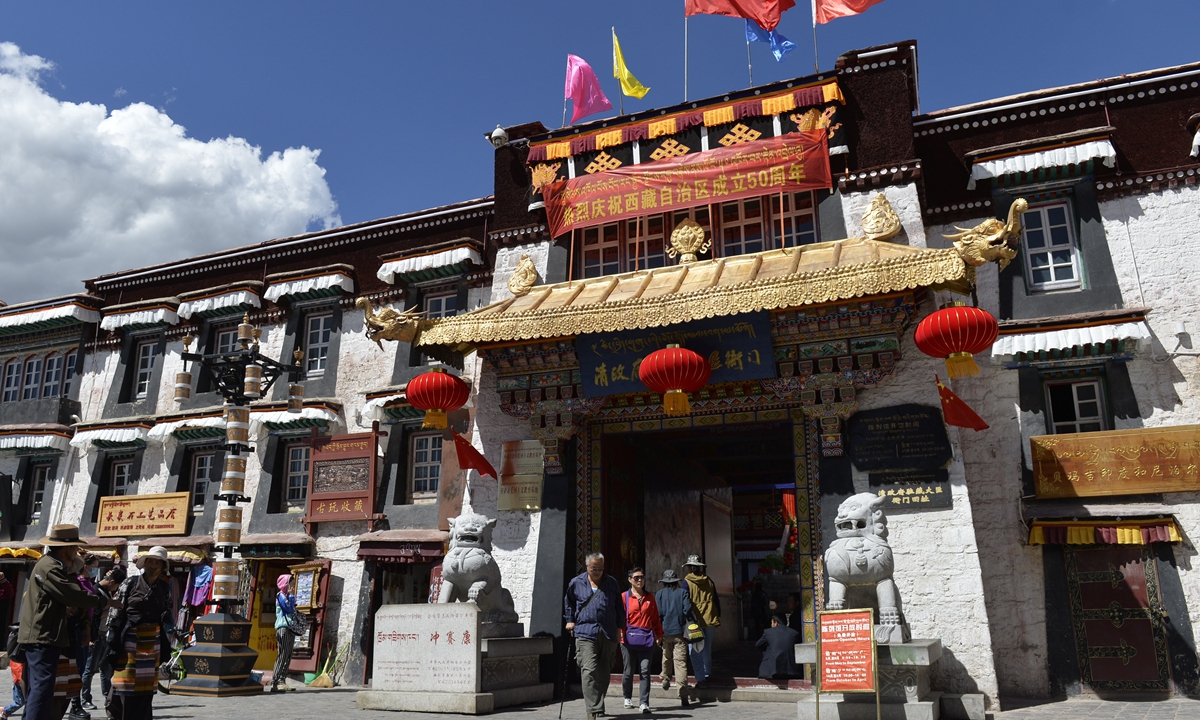
The Qing Resident Minister in Tibet Office in Lhasa is now open to the public Photo: Xinhua
Recently some foreign hostile forces smeared the historical convention and principles of the reincarnation of Tibetan living Buddhas. They tried to deny the essence of the relationship between the central government of the Yuan Dynasty and the local government of Tibet as well as the institutional norms of the central government of the Qing Dynasty in administering the living Buddhas by talking loosely without any historical data or factual basis.
They even made groundless attacks on the
29-Article Ordinance for the More Efficient Governance of Tibet proclaimed by Emperor Qianlong, claiming that "studies by scholars have proved that this ordinance was later forged by the Chinese government." They claimed that the Regulations of Council of Ethnic Affairs (Lifan Yuan) does not have any relevant content and the part related to Tibet was not law. Council of Ethnic Affairs was a government agency established in the Qing Dynasty which supervised regions including Tibet.
This brutal and barbaric twist of historical documents and facts not only showed their ignorance and prejudice, but also became a laughing stock for people.
As is known to all, the
29-Article Ordinance for the More Efficient Governance of Tibet promulgated in 1793 was an important law related to the governance of Tibet in the Qing Dynasty. It established the system of lot-drawing from a golden urn to determine the reincarnation of the living Buddhas and made it clear that the Resident Ministers in Tibet would be in charge of affairs within Tibet and the status of the Resident Ministers in Tibet would be equal to that of the Dalai Lama and the Panchen Erdeni and all the officials below the position of Kalon (title of official) and living Buddhas should be governed under the principle of subordination.
It clarified that the power of the Resident Ministers in Tibet included managing the administration, military affairs and foreign affairs of the local government, as well as examining the income and expenditure of the Dalai Lama and the Panchen Erdeni every year. It fully demonstrated the sovereignty and effective administrative jurisdiction of the central government of the Qing Dynasty over Tibet.
However, now some people have tried all means to deny the authenticity of the
29-Article Ordinance for the More Efficient Governance of Tibet so as to open a crack to deny the sovereignty of the Qing dynasty over Tibet.
For example, some foreign forces claimed that the ordinance only has the Tibetan transcript. There is neither Chinese nor Manchu original version, which means it was forged by Fu Kang'an, a Qing Dynasty general, so the international community should not recognize it and use it as the legal basis for the system of lot-drawing from a golden urn.
Rather than caring about Tibet, these people's real intention is to find a historical breakthrough for "Tibet independence."
Some people did not dare to deny the existence of the
29-Article Ordinance for the More Efficient Governance of Tibet but claimed that it was promulgated by Fu Kang'an personally, rather than being approved by Emperor Qianlong. Some simply made the accusation that the ordinance was forged by the Chinese government but they cannot provide any evidence.
In this article, their absurd logic wrapped under the so-called academic opinions will be assessed an unearthed.
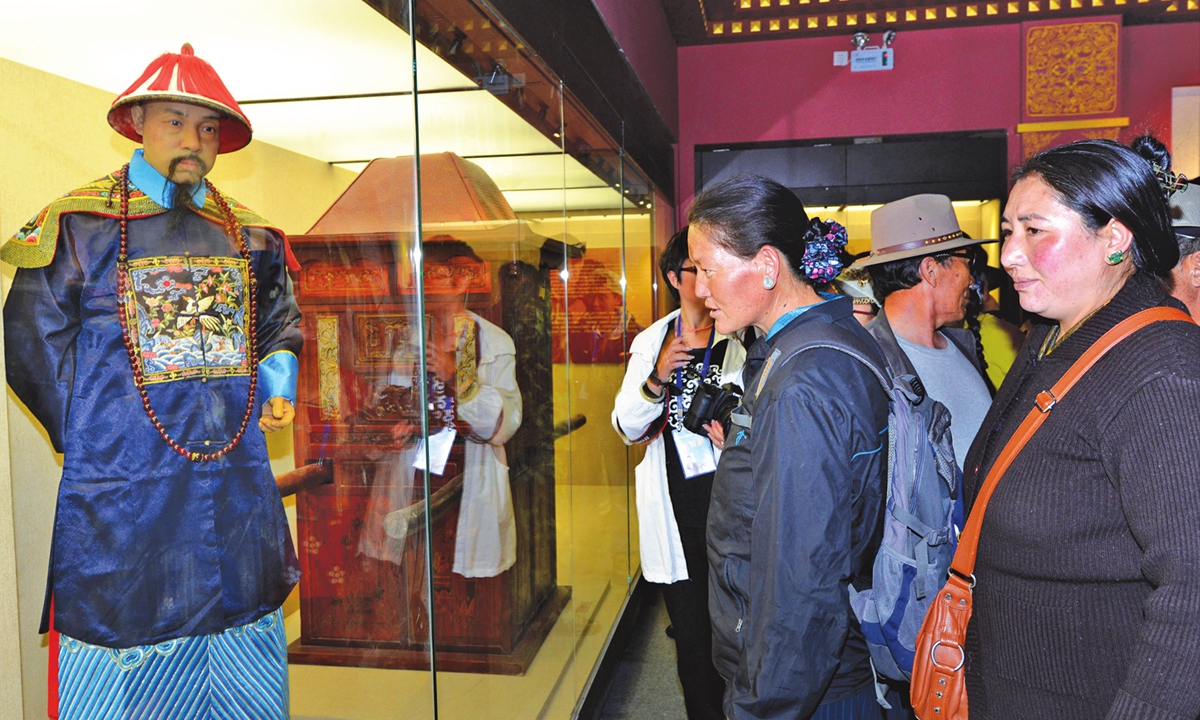
People visit the Qing Resident Minister in Tibet Office in Lhasa. Photo: cnsphoto
Historical background First, the
29-Article Ordinance for the More Efficient Governance of Tibet was not only proposed by Emperor Qianlong, the important principles in it were also clarified by the Emperor himself. All the contents in the ordinance were reviewed by Emperor Qianlong before being promulgated.
People with basic knowledge of Chinese history should know that the word "qinding" means that it is decided by the Emperor. All the important affairs in Tibet must be reported to the Emperor and ultimately be ruled by the Emperor, which is common sense. There are numerous historical documents and archives that can prove this. To claim the 29-article ordinance was forged by Fu Kang'an only shows these people's ignorance.
Second, before Emperor Qianlong dispatched Fu Kang'an to Tibet, he had already decided to make relevant ordinance after the invaders were expelled. When the Gurkha first invaded Tibet, Emperor Qianlong in the year of 1788 summoned the Resident Minister in Tibet Qinglin to warn him about the problems at the border. "After this event is over, let Bazhong handle the affairs, including how to place the Tangut soldiers at the border for defense, how to drill and do all the necessary things, and how to deal with the aftermath. Bazhong needs to handle it with consultations with Ehui in order to carry it out forever, which is really beneficial."
In 1789, after the Gurkhas were expelled from Tibet, Emperor Qianlong gave an order to General Ehui in Chengdu, saying that "although the incident has been solved, if no rules are made after the withdrawal of soldiers, thieves and bandits will still invade. If [we are] unprepared and the incident needs more energy to solve, Tibetans will not enjoy security for a long time."
"The Dalai Lama used to fill the vacancies of the Kalon, Depon, and Depa - official titles - in Tibet, and the Resident Ministers in Tibet did not even hear about it. If the Dalai Lama was reasonable and chose the best to fill the positions, it would have been helpful. But the Dalai Lama was incompetent and was unable to take charge of affairs. He only relied on the lamas close to him to do things. If Kalon, Depon, and Depa were absent, he couldn't help but listen to his subordinates. Kalon Galunsuoluomuzhale and Depa Sanggan and others were the proof. Therefore, the Resident Ministers in Tibet should choose Kalon, Depon, and Depa in Tibet, which will be beneficial. In addition, the Resident Ministers in Tibet and others should always carefully observe the work of Kalon, Depon and Depa. When these positions are vacant, the Resident Ministers in Tibet should have his own opinions, not confused by others. Then in case of emergency, they [Kalon, Depon and Depa] can be useful."
"If Resident Ministers in Tibet behave poorly, every year when the Dalai Lama and Panchen Erdeni send envoys, they can state the errors of the Resident Ministers in Tibet truthfully. I will punish the Resident Ministers in Tibet without mercy."
From this, the basic structure of the 29-article ordinance can be clearly seen. It includes resolving the issue of the choice and appointment of local officials in Tibet and the status of the Resident Ministers in Tibet stationed in Tibet, as well as specific requirements for military training, garrison, and determination of military supplies.
Moreover, before Fu Kang'an entered Tibet, general Ehui in Chengdu, counselor Chengde, official Bazhong and the Resident Minister in Tibet Shulian had already put forward "19-Article on the aftermath of Tibet." On June 27, 1789, after being consulted with Heshen, Minister of the Grand Council, it was reported to Emperor Qianlong.
The content includes dispatching soldiers to Tibet for defense purpose; stationing soldiers in important places such as Lazi, Sage, and Xiega'er; conducting training on a regular basis; the Resident Ministers in Tibet in Tibet and the Dalai Lama should handle public affairs based on regulations; the Resident Ministers in Tibet should go through the inspections in Tibet each year; the two Resident Ministers in Tibet stationed in Tibet should live together and handle business affairs at the same time; for foreign trade in Tibet, the Resident Ministers in Tibet should be good at controlling it and could reduce the taxes based on needs.
In addition, it also put forward requirements on the transportation of military supplies and the military discipline of officers and soldiers stationed in Tibet. This can be viewed as the prelude to the introduction of the 29-Article ordinance.
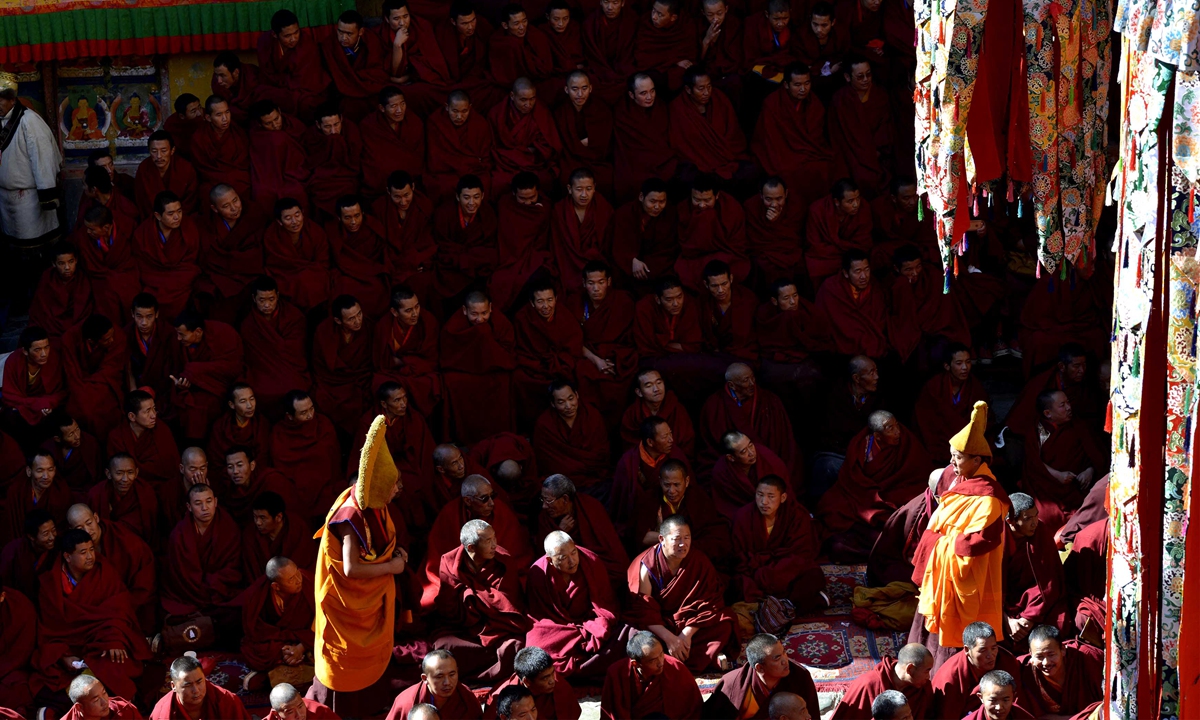
Lamas attend the 20th anniversary of the enthronement of Bainqen Erdini Qoigyijabu, the 11th Panchen Lama, one of the two most revered "living Buddhas" in Tibetan Buddhism, in Tashilhunpo Monastery in Xigaze, Southwest China's Tibet Autonomous Region, on December 8, 2015. Photo: cnsphoto
Fourth, before Fu Kang'an led troops into Tibet, Emperor Qianlong ordered him to handle the aftermath after expelling the enemies. In 1792, when Fu Kang'an arrived in Lhasa, he told the Dalai Lama and the Panchen Erdeni that after the enemies are destroyed, new regulations must be issued to guarantee peace at the borders and to avoid future troubles. The Dalai Lama and the Panchen Erdeni all agreed, saying the Resident Ministers in Tibet should preside over the handling of the affairs that need to be dealt with in the future, and they will listen to and obey it.
Meanwhile, Emperor Qianlong also issued an imperial decree, stating "Whenever there is an event that should be handled thereafter, the Resident Ministers in Tibet will handle it with discussions with the Dalai Lama." Once Fu Kang'an received the decree, he immediately informed the Dalai Lama, who showed active support.
Fifth, after Gurkhas were completely expelled from Tibet, Fu Kang'an returned to Tibet and met the Dalai Lama and the Panchen Erdeni once again, mentioning the regulations on handling the aftermath. When he arrived in Lhasa, he was ordered by the Emperor to consult with Sun Shiyi, governor of Sichuan, Resident Minister in Tibet Helin and Huiling, another official stationed in Tibet, to stipulate the regulation and make sure that it is implemented without harm, once for all.
Emperor Qianlong also proposed seven reforms. The key points include: use of the system of lot-drawing from a golden urn; the Resident Ministers in Tibet should not only make appointment to the positions of Kalon, Depa and Depon, but also exercise checks on the revenue and expenditure; after the withdrawal of troops, borders in Tibet should be checked and boundary markers should be set up; individuals should not be allowed to trespass the border; and the Resident Ministers in Tibet should take turns to inspect the border areas of Jilong, Nielamu and Zongka.
In 1792, Emperor Qianlong told minister of the Privy Council (Junji Chu) and other officials that he has issued an imperial decree and ordered Fu Kang'an and others to handle the aftermath in Tibet. The Emperor also listed six additional articles for the handling of aftermath.
Fu Kang'an and other officials followed Emperor Qianlong's repeated orders and proposed several drafts for review. Following Emperor Qianlong's approval of the regulations, Fu Kang'an together with other officials compiled the main provisions of the above-mentioned regulations into the new 29-article ordinance for Tibet and translated them into Tibetan.
Later after receiving another imperial order from Qianlong, Fukang'an, Sun Shiyi, Huiling and Helin solicited opinions of the Dalai Lama and the Panchen Erdeni and successively submitted them to Emperor Qianlong and received detailed feedback from the Emperor. This later became the content of the
29-Article Ordinance for the More Efficient Governance of Tibet approved by Qianlong.
Effective implementationThe
29-Article Ordinance for the More Efficient Governance of Tibet was compiled under the direct guidance of Emperor Qianlong and led by Fu Kang'an. The articles were submitted to the Emperor after thorough discussions among the Resident Ministers in Tibet, officials in Tibet and local lamas and monks. They were debated by ministers at the court and finally approved by Emperor Qianlong.
In order to promote the system of lot-drawing from a golden urn, Emperor Qianlong personally wrote an article called "On Lama," expounding the reasons in detail, and personally designed the shape and pattern of the golden urn. The ordinance received heartfelt support from the Dalai Lama and Panchen Erdeni. In a memorial to Emperor Qianlong, Fu Kang'an wrote that the Dalai Lama said "our Great Emperor protects Tibet" and "the ordinance will benefit both monks and layman."
Moreover, the
29-Article Ordinance for the More Efficient Governance of Tibet was widely known in Tibet, even in some remote places.
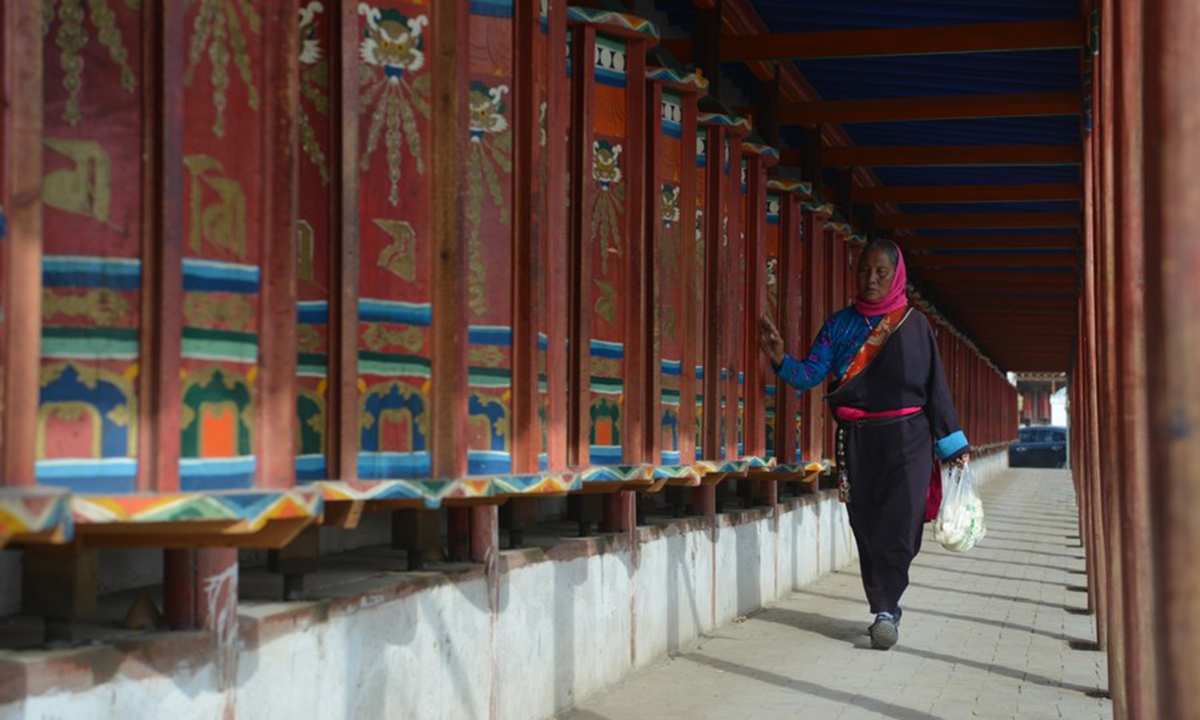
A follower of the Tibetan Buddhism spins prayer wheels for blessing outside the Rongwo Monastery in Tongren County of Huangnan Tibetan Autonomous Prefecture, northwest China's Qinghai Province, July 23, 2019. (Xinhua/Zou Yu)
Fu Kang'an and others mentioned in memorials to the throne that "As soon as we received the reply from Your Majesty, the Resident Minister in Tibet Office translated the ordinance into Tibetan, published it, hung it everywhere in Tibet and informed even the remote regions to let the public know about it, in order to respect Your Majesty's intention of guarding and making rules, and caring for and fostering the border regions."
Since the ordinance was a guiding document and a legal system for handling major issues in Tibet, all major issues in Tibet since then have been handled in accordance with it.
For instance, to recognize the boy with reincarnated soul of a living Buddha, the emperor would grant the special golden urn, into which lotteries with the names of candidates written in Manchu, Han Chinese and Tibetan languages were put, and the Hutuktu (a religious title for lama) and Resident Ministers in Tibet would draw the lottery in front of the Sakyamuni Buddha statue at the Jokhang Monastery.
Travelers and merchants from neighboring countries, or personnel Dalai Lama sent overseas, should report to the Resident Minister in Tibet Office for permission. A currency carved with "Qianlong Treasure" was issued, with reign title on the one side and Tibetan words on the other side. A 3,000-men army was deployed across Tibet.
The income and cost of the Dalai Lama and Panchen Lama should be reviewed by the Resident Ministers in Tibet twice a year. In supervising and managing affairs in Tibet, the Resident Ministers in Tibet are as equal as the Dalai and Panchen lamas, and they shall negotiate and handle the government affairs. All the heads and officials under Kalon, including the living Buddhas, should obey the Resident Ministers in Tibet.
Text and language useThe
29-Article Ordinance for the More Efficient Governance of Tibet was issued in 1793, the 58th year of Emperor Qianlong's reign. So far, several versions in Tibetan language of the document have been found: one was collected at the Jokhang Monastery of Lhasa, one at Tashilhunpo Monastery of Xigaze, and a copy found in 1811 at the Office of the Qing Resident Minister in Tibet.
Relatively complete versions in Han Chinese language are those mentioned in memorials to the throne that Qianlong received, Qianlong's letters to Manchu general Fu Kang'an and other Resident Ministers in Tibet, those collected in several volumes of Hening's
Almanac of Ü-Tsang and Zhang Qiqin's
Abstracts of Tibetan Affairs, which collected the whole articles of the document
Fu Kang'an also clearly stated how the
29-Article Ordinance for the More Efficient Governance of Tibet was translated from Han Chinese language to Tibetan. In the 58th year of Qianlong's reign, Fu Kang'an and his peers reported to the Emperor, saying that the ordinance had been translated into Tangut language, which was sent to the Potala Palace for for discussion with the Dalai Lama. Spiritual heads of the religion and officials in Tibet were also called up and showed the ordinance.
"We have already followed the order to find out the situation in Tibet, and we have comprehensively reviewed each article and discussed them properly. The Dalai Lama should know that he should be grateful for the divine grace and obeys it. It is beneficial to Tibet."
Afterward, Fu Kang'an sent copies of the official version of the newly drafted
29-Article Ordinance for the More Efficient Governance of Tibet to the Dalai Lama and Kundeling Hutuktu of Gelug. In the attached letter, Fu Kang'an said that "Recently, we have prepared the new
29-Article Ordinance for the More Efficient Governance of Tibet and have reported to His Majesty, delivered copies and have it translated as the attached. The Dalai Lama and the Kundeling Hutuktu should follow the ordinance and order all Tibetan officials, military leaders and local regions to follow it forever. If someone would treat it lightly or oppose it, he will be punished severely."
The
29-Article Ordinance for the More Efficient Governance of Tibet not only has versions in Tibetan and Han Chinese languages, its relevant content was also recorded by other documents of the Qing Dynasty.
According to Daqing Huidian, a collection of official statutes of the Qing dynasty issued by Emperor Jiaqing, "those prominent lamas are capable of reincarnation with their religious knowledge, and their reincarnations are called Khuvilgaan (or Yangsid in Tibetan, meaning the boy with the reincarnated soul). They are selected by the golden urn lot-drawing."
The reincarnation of the Hutuktu is done through Dalai Lama's Lamo Chokyong (wizard) by calling the god to point out where the Khuvilgaan is so that he would be visited and worshipped.
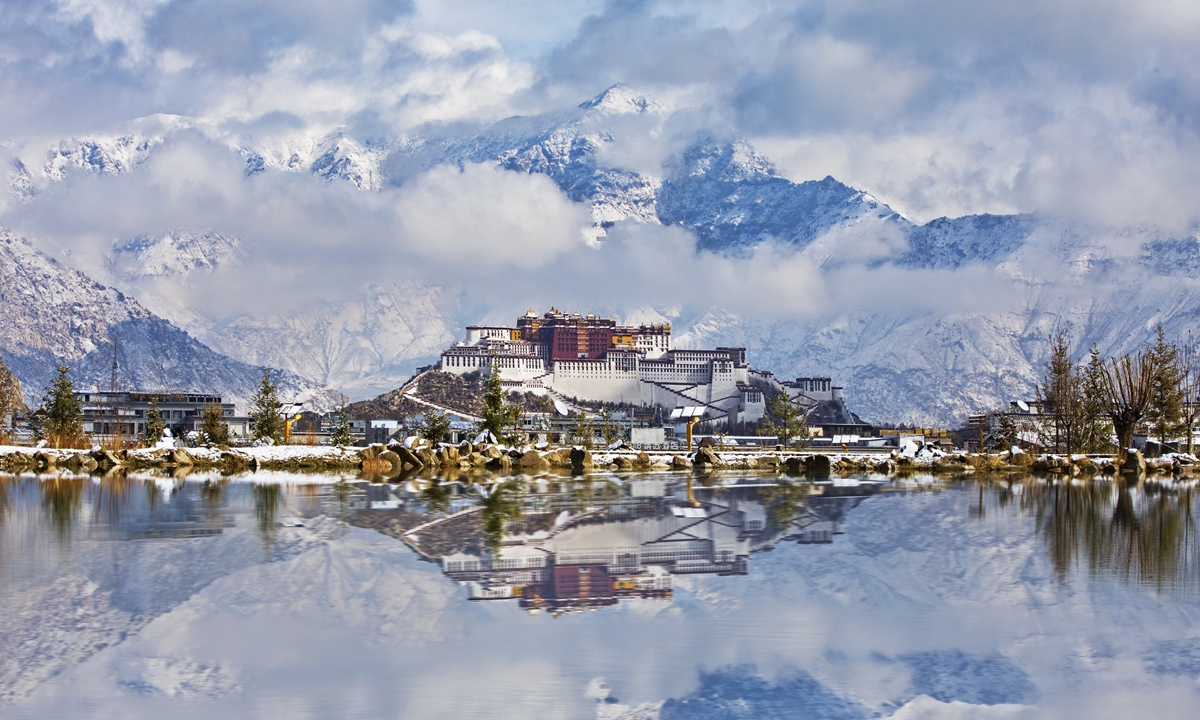
The Potala Palace in Lhasa, Southwest China's Tibet Autonomous Region was inscribed to the UNESCO World Heritage List in 1994. Photo: IC
In 1792, Emperor Qianlong managed Tibetan affairs after forcing out the Gurkhas. He rebuked the unscrupulous behavior of Lamo Chokyong, and issued a golden urn to the Jokhang Monastery, ordering that at the death of any Dalai Lama, Panchen Lama, Jetsun Dampa Hutuktu and other Hutuktus and lamas in Tibet and Mongolia, the names and birthdays of the Khuvilgaan candidates would be announced, and put into the golden urn. With the lamas chanting and the Resident Ministers in Tibet supervising, a name shall be drawn from the urn and that would be the name of the Khuvilgaan. An alternative golden urn was placed at the Lama Temple in Beijing.
Other important contents of the
29-Article Ordinance for the More Efficient Governance of Tibet are also shown in the Daqing Huidian Shili in the period of Jiaqing and Guangxu emperors. For instance, it reads that in 1791, as Tibet lacked military officers, Qianlong ordered the Resident Ministers in Tibet and the Dalai Lama to discuss and pick replacements for the positions. The next year, Qianlong approved that in supervising and running Tibetan affairs, the Resident Minister in Tibet was equal to the Dalai and Panchen lamas.
"Local officials under Kalon and lamas should report to the Resident Ministers in Tibet on the matters of management, no matter the affair was big or small. The management of the affairs of the Tashilhunpo Monastery should all be reported to the Resident Ministers in Tibet, instead of local military officers and clan heads to avoid malpractices. The Resident Ministers in Tibet should conduct checks and control while inspecting border regions to eliminate drawbacks."
These facts clearly show that several versions in Tibetan language of
29-Article Ordinance for the More Efficient Governance of Tibet exist at different places. It was an important historical document that was known to officials, monks and ordinary people at the time. It was also illustrated in the orders and memorials to the throne between Qianlong and Fu Kang'an. Some documents in Han Chinese language have the entire contents of the ordinance.
The ordinance drafted by Fu Kang'an and other officials was translated into Tibetan from Han Chinese, or probably also Manchu language. Fu Kang'an has reported it to Qianlong and all the content was approved by the Emperor. More importantly, all content in the ordinance was implemented and practiced later in the history of Tibet.
Historical research is serious work and has to be based on facts and solid documents. It is impossible to deny the legitimacy and authority of the
29-Article Ordinance for the More Efficient Governance of Tibet.
Moreover, efforts by some people to misrepresent the history of the Yuan Dynasty (1279-1368), smearing the relationship between the Fifth Dalai Lama and the central government of Qing Empire, are similar to smearing the
29-Article Ordinance for the More Efficient Governance of Tibet, but ruder and more awkward. These smears show that the "Tibet independence" is in the wrong and at a dead end, which will not shake the solid historic facts.
The author is a research fellow at the China Tibetology Research Center








